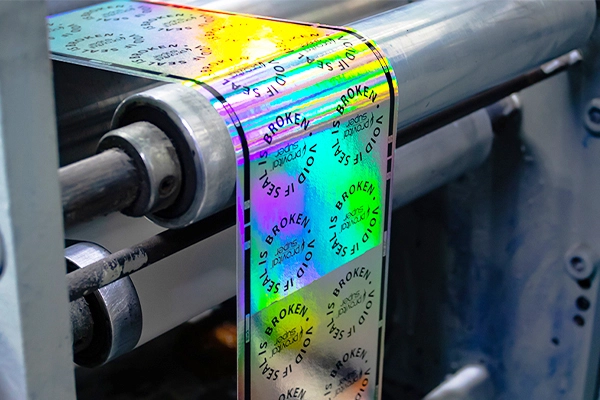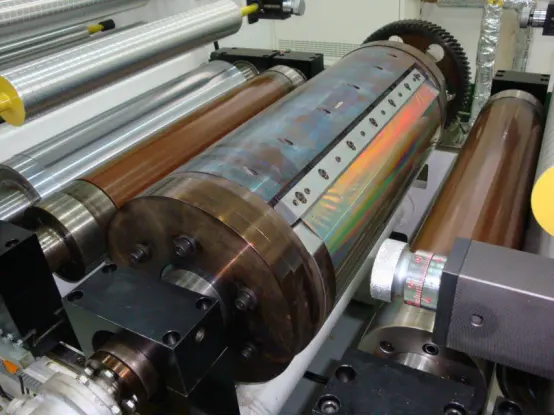In today’s globalized economy, the issue of counterfeiting continues to pose significant threats to businesses worldwide. The need for anti counterfeit printing solutions has never been more critical. However, while the demand for such solutions increases, many businesses face numerous challenges in adopting anti counterfeit printing methods. This article delves into these hurdles, offering insight into the complexities and potential solutions for businesses.

Understanding the Need for Anti Counterfeit Printing
Counterfeiting is a growing problem that affects various industries, from pharmaceuticals to fashion. It not only harms brand reputation but also poses health and safety risks to consumers. To combat this, businesses are turning to anti counterfeit printing technologies. These technologies help in ensuring the authenticity of products, protecting both the consumer and the brand.
High Implementation Costs
One of the primary challenges in adopting anti counterfeit printing is the high cost of implementation. Many small to medium-sized enterprises (SMEs) find it financially burdensome to invest in these technologies. The cost of specialized inks, printing machinery, and ongoing maintenance can be prohibitive. For more insights on the costs involved, businesses can explore industry resources.
Complexity of Technology
The technologies used in anti counterfeit printing are often complex and require specialized knowledge to operate. This complexity can be a barrier for businesses that do not have the necessary expertise in-house. Training staff or hiring experts can add to the overall cost, making it an even more challenging prospect for businesses to undertake.
Lack of Standardization
Another significant hurdle is the lack of industry-wide standards for anti counterfeit printing. Without standardized protocols, businesses may find it difficult to determine the most effective methods for their specific needs. This lack of standardization can lead to inconsistencies and reduce the overall effectiveness of anti-counterfeiting measures. Companies can learn more about industry standards to navigate this challenge.
Integration with Existing Processes
Integrating anti counterfeit printing technologies into existing production processes can be complex and time-consuming. This integration requires careful planning and coordination to ensure it does not disrupt the production line. Businesses need to assess their current processes and determine the best way to incorporate these new technologies effectively.
Security Concerns
While anti counterfeit printing technologies are designed to enhance security, they also introduce new security challenges. Protecting the proprietary technology from being copied or tampered with is crucial. Ensuring that these technologies remain a step ahead of counterfeiters is an ongoing battle that requires continuous innovation and vigilance. Businesses can explore external resources to better understand these security implications.
Pharmaceutical Industry Challenges
The pharmaceutical industry faces unique challenges when it comes to anti counterfeit printing. Ensuring compliance with stringent regulatory requirements is a must, making the adoption of these technologies even more complex. Companies in this sector can benefit from understanding serialization compliance to better tackle these challenges.
Environmental Concerns
The environmental impact of anti counterfeit printing technologies is another consideration for businesses. The use of specialized inks and materials can raise concerns about sustainability and environmental responsibility. Businesses must weigh the benefits of anti-counterfeiting measures against their environmental impact and seek eco-friendly alternatives where possible.
The Role of AI in Anti Counterfeit Printing
Artificial Intelligence (AI) is playing an increasingly important role in anti counterfeit printing. AI technologies can enhance the detection of counterfeit products and streamline the authentication process. Businesses can explore how AI technologies are revolutionizing this field and how they can be integrated into existing systems.
Conclusion
Despite the numerous challenges in adopting anti counterfeit printing technologies, the benefits they offer make them a worthwhile investment for businesses. By addressing these hurdles head-on, companies can protect their brand, ensure product authenticity, and safeguard consumer trust. As technology continues to evolve, staying informed and adaptable will be key to overcoming these challenges.

FAQs
What are the main challenges in adopting anti counterfeit printing?
The main challenges include high implementation costs, complexity of technology, lack of standardization, integration issues, and security concerns.
How does AI impact anti counterfeit printing?
AI enhances the detection of counterfeit products and streamlines the authentication process, making it a valuable tool in combating counterfeiting.
Why is anti counterfeit printing important for businesses?
Anti counterfeit printing is crucial for protecting brand reputation, ensuring product authenticity, and safeguarding consumers from counterfeit goods.
This article contains affiliate links. We may earn a commission at no extra cost to you.






